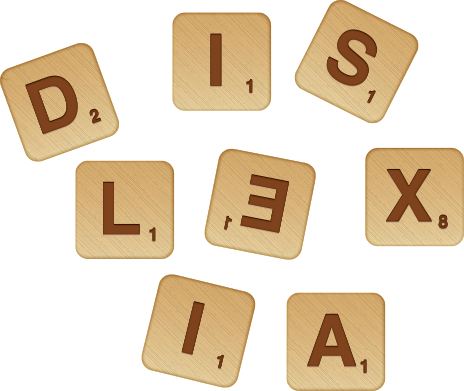CONOCE SINCROLAB
0
0
0

Dyslexia is considered a SLD (DEA) of neurobiological origin, characterized by the presence of difficulties in accuracy and fluency recognition of written words and by a deficit in reading skills decoding and spelling. These difficulties are the result of a deficit in the phonological component of language. They do not respond to cognitive or visual difficulties.
International Dyslexia Association (IDA, 2002; Lyon, Shaywitz and Shaywitz, 2003)
Learning disorders, including dyslexia is included, they must be differentiated from normal variations in performance and lack of educational opportunities and cultural factors.
According to most recent studies, dyslexia is characterized by an alteration in phonological processing, ie the ability phoneme-grapheme decoding. In the most recent publications the unitary nature of dyslexia, attributing the pathogenetic basis of dyslexia (Shaywitz, 1995) to phonological impairment and obviating theories differing types of dyslexia it is emphasized. However, we must consider that we will not find two equal dyslexic.

Child Dyslexia is a deficiency in reading, writing and learning. Child dyslexia affects 5% of children of 7 to 9 years, especially boys and has a genetic basis.
Manifestations of dyslexia are varied and depend on the severity of the condition and age of the child, because they can affect functions related to memory, vocabulary, and speech motor areas.
The child with dyslexia He is able to learn to read, but it will differently, with a different method and special treatment, giving strategies and techniques to deal with their difficulties in reading and writing, teaching them different skills to help you understand and memorize the texts read.

To program the most appropriate treatment, it is important from a good evaluation through standardized test, where you can pick up the involvement of reading routes and make a proper schedule objectives. Assessment and treatment of childhood dyslexia must make a speech therapist with experience in this field.
Initially it is advisable to conduct individual sessions to meet the specific needs of the child, a total of one or two weekly sessions, using a variety of materials and resources (visual aids, auditory, manipulatives ...) and making use of the new technologies (computers, ipad applications, Internet sites educational recorders ...). It should take into account the views of the child (tastes, preferences, hobbies ...) to prepare a personalized intervention material and thus increase motivation. Therefore ensure that the sessions are as playful as possible. Even taking into account these recomendciones, treatment duration marks the evolution of the child. Each person is different and the way we work is always unique, personal and distinct.
Speech therapy sessions are very plastic as the same language, which is affected in children with dyslexia, this means that spontaneity, improvisation, empathy and listening should be one of the basic and essential to work requirements. Obviously, with a clear pattern of previous work to be done or intends to do in each session. These specific objectives are based on the following areas that may be affected:
Children with dyslexia often have many difficulties in phonemic awareness. Phonemic awareness or consciousness segmental part of certain skills metalanguage. Examples of metalinguistic skills that need to be strengthened in dyslexic children are isolated words in a phrase or sentence, isolate the syllables of a word, isolate phonemes of a syllable, etc. For proper reading fluency work reading letters, syllables, words, phrases and text finally first. In this way we will work from the simplest and will progressively increasing complexity.
Related to phonemic awareness activities:
Depending on age and managing phonemic route, the route lexical or visual work. Through this a faster and efficient machine readable get.
Lexical awareness related activities:
Can work reading comprehension through self-instruction training, development of bulleted text in question, presenting the reading accompanied drawings relating to the text, creating summaries, mind maps and concept maps.
The diagnosis of childhood dyslexia will take place once the child begins to show the first difficulties in learning reading and writing. the existence of a delay in relation to age peers observed. Within each dyslexic child may have difficulties with certain variations. Although certain common symptoms and characteristics are recognized:
Normally in education we will discuss developmental dyslexia or developmental dyslexia because dyslexia is that acquired after brain injury caused in the areas in charge of reading-writing processing. Although there are numerous classifications and nomenclatures, in this case we establish the classification of the types of dyslexia in terms of processing routes or lexical access are affected, so we can differentiate between:
It corresponds to the malfunctioning of the phonological route, ie the indirect route that uses the grapheme-phoneme conversion to enter the lexicon. This type of dyslexia difficult to read long words and infrequent and functional words and disables reading pseudoword, where they often make many visual errors that cause lexicalizaciones, ie, read "sword" when it says "espaca" Also present numerous morphological errors or derivatives in maintaining the root words but change morphemes.
More errors are observed in reading the words function in the words of contenido.Presenta best results in reading familiar words both regular and irregular.
It involves the malfunction of the visual, lexical or direct route, so the subject does not present major difficulties in reading through the grapheme-phoneme conversion of regular words. If you have problems when reading irregular words (eg English language), tending to regularize, so we usually discuss numerous errors of omission, addition or substitution of letters. Have a better level reading assignments pseudoword compared to phonological dyslexics. They have major problems with spelling arbitrary and often confuse homophones, since only guided by auditory information.
It is characterized by deficits in both routes, which causes semantic errors are discussed, namely, that a few words be read by others who have no visual resemblance but semantic.Besides semantic errors have difficulty reading pseudoword, function words, verbs and rare words, committing numerous visual and derivatives when read errors and presenting difficulties in accessing the meaning.
Design personalized programs in executive functions and care tailored to the child's cognitive profile.
Sincrolab adapts to patients thanks to our artificial intelligence engine.
the performance of each patient and modifies the level of difficulty according to the daily performance of the child.
The evolution of patients accessing complete statistics.
You will have a precise control of the course and evolution of your intervention.
With Sincrolab you can increase the time of stimulation of the basic cognitive processes of your patients with 15 minutes daily during 3-4 weekly sessions.
Calle Irún 23, 1º 2, 28008 Madrid